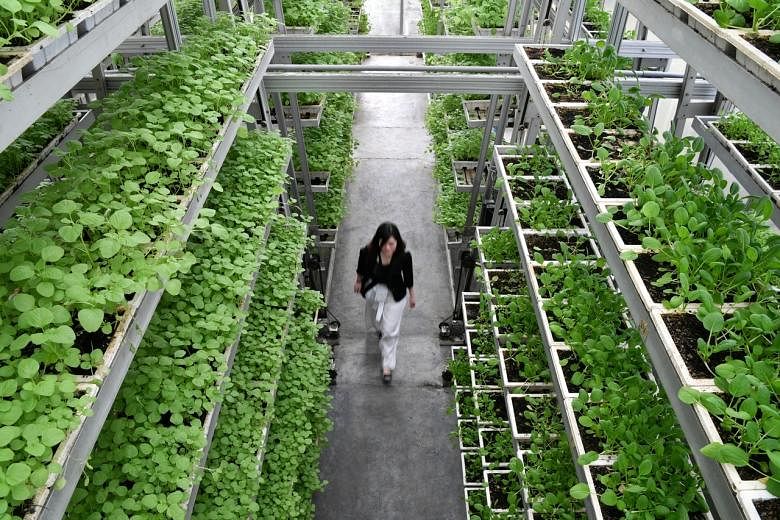SINGAPORE - Growing more food locally and increasing the number of import sources are ways that Singapore safeguards its food security in the face of shocks like Covid-19.
"But if people stockpile (food) at home and inadvertently waste it later, it is a waste of effort to bring the food in in the first place," said Mr Masagos Zulkifli, Minister of the Environment and Water Resources, in an interview with The Straits Times and Chinese daily Lianhe Zaobao which was broadcast on Friday (June 19).
Safeguarding the supply of food and water is a balance between supply and demand, said Mr Masagos, who oversees both the Singapore Food Agency and national water agency PUB.
For example, PUB ensures that water flows from taps in Singapore regardless of weather conditions or other threats, he said. But Mr Masagos added: "If all of us don't turn off our taps, then no amount of effort on the supply side will be able to fulfil the demand that we need in terms of water. Food is the same."
There were a few instances of panic buying at the start of the year during the coronavirus outbreak.
Shoppers, for example, rushed to supermarkets to load up on groceries when Malaysia closed its borders, and also when Singapore upgraded its Disease Outbreak Response System Condition to orange, which meant that the outbreak was deemed to have moderate to high public health impact.
Singapore now imports food from more than 170 countries and regions.
"But this pandemic has created situations which we, I would think, have never in our lifetime thought would happen," said Mr Masagos.
For example, agricultural countries restricted food exports over concerns for their own food security, and this caused the prices of some important food items, such as rice or flour, to rise, he noted.
"(There have been) price fluctuations, supply disruptions, and we therefore have been thinking about what we have to do to tackle this," said Mr Masagos.
One solution, he said, is to boost local production. The Government has set a "30 by 30" goal for the country to produce 30 per cent of its nutrition needs locally by 2030. Currently, only 10 per cent of food demand is produced locally.
Said Mr Masagos: "We now call it 30 by 30 Express... to launch it fast and hope we see the results within six to 24 months."
Technology will be a great enabler to helping Singapore achieve this in the short term, he said. But over the longer term, Singapore has a plan to expand agriculture in the Lim Chu Kang area and aquaculture off the Republic's southern coast.
He said that plans for Lim Chu Kang will also make the area an innovation hub for food production.
"It will not just be a place where you produce food locally. It will also be a place for innovations, to put in research and development ideas, a place where we can also implement zero-waste concepts, where the waste from one part of the industry can be used by another part of the industry," he said.
These strategies will put Singapore in good stead to dealing with the challenge of climate change, said Mr Masagos.
When planet-warming gases emitted by human activity accumulate in the atmosphere, weather patterns can be affected. This can in turn have negative implications on traditional agriculture.
"So we have to be ready now," said Mr Masagos. Singapore is sowing the seeds of innovation, he added. "These are all exciting developments that I hope our children will benefit from."












